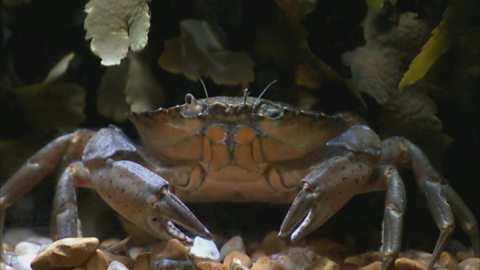Reproductive cycle of crabs
Description
Professor Richard Fortey investigates the reproductive cycle of crabs. The moulting process is where the female sheds her exoskeleton by releasing enzymes that digest the shell and then, through osmosis, takes in water. The increased pressure helps remove the shell completely. The male crab protects her during this delicate stage in an embrace, as he is attracted to her by the release of pheromones. Dr. Davie Wilcoxson explains that this embrace can last up to 10 days. After being released by the male, the female crab is referred to as being âberriedâ as she carries a mass of eggs around with her for months. The free swimming larvae will eventually leave the mass and begin to feed on the plankton. The parasite sacculina is also discussed. This member of the barnacle family attaches itself to crabs during moulting. It alters the crabâs behaviour so that it protects the sacculina and its eggs.
Classroom Ideas
As they watch the clip, students can take notes on the key facts about reproduction in crabs, and how hormones alter their behaviour. This can be compared to the mating behaviour of other animals with consideration of the costs, benefits and potential danger of each method. Pheremones could be looked at in more detail, with students investigating specific cases of the use of pheremones as a means of communication. This could relate to reproduction, marking territory or signalling routes to food sources. Consideration could be made of communication between plants, such as the chemical signalling between lima bean plants when attacked by aphids. Sacculina could be looked at as an example of parisitism, considering this relationship as the inhabiting of a particular niche.
Ecosystems
Now playing video 5 of 5
- Now playing7:28
